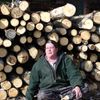
Wouldn't it be great if you could stick a solar panel the size of a dinner plate on the roof of your home or your electric vehicle, and have all the power you need? How about a wind turbine the size of a lawn ornament on your roof too, for night time?
Unfortunately it's all a matter of maximums. There's only so much energy available in solar radiation and in moving air. It's the size of the collector and the intensity of resource that matters.
Solar maximums
Under ideal conditions and at high noon, 1,000 watts of solar energy per square meter hit the earth's surface. Of course, higher latitudes and local weather conditions reduce this amount substantially, and you need to aim that solar collector towards the sun for maximum results. Above the atmosphere, it's more like 1,400 watts per square meter, but that's a long wire to run. A typical photovoltaic (PV) module can convert around 13 to 18 percent of that radiation into electricity, while the best new laboratory PV cells can reach about 43 percent conversion efficiency.
So, a "perfect" 12 inch diameter (dinner plate size) PV module (area of 0.07 square meters) could produce, at most, no matter how far the technology of PV and superconducting wire advances in the future, just under 70 watts. There isn't any more energy available in that square meter of sunshine. What would that fictional "perfect" PV module, with 100 percent conversion efficiency look like? You wouldn't be able to see it, as no light could reflect from it.
Wind maximums
Air has weight -- about 1.23 kilograms per cubic meter, at sea level. When it moves, it has kinetic energy, Newton's good old Force = Mass x Acceleration law. Wind turbines simply slow down moving air, transfer the harvested energy to a spinning shaft, and drive an electrical generator. Large, industrial-scale turbines can operate at efficiencies of 40 to 50 percent by using (expensive) active controls, while smaller home- and business-sized turbines operate in the 30 to 35 percent range.
The theoretical maximum efficiency for wind power is 59.26 percent conversion -- the Betz Limit -- beyond which air just goes around the turbine instead of through it. How would the fictional "perfect" wind turbine that captures 100 percent of the energy in the wind work? It would work for an instant, then stop, because it completely stopped the moving air. Game over!
As with solar, what matters most with wind power is the size of the collector and the intensity of the resource; in this case, wind speed instead of sunlight intensity. Collector size doesn't refer to the surface area of the rotor and blades, but to the cross-section of moving air they spin in, called "swept area." Double the diameter of a wind turbine collector, and you get four times the power. Double the wind speed, and you get eight times the power! But, there isn't any more energy available in that cross section of moving air. It doesn't exist, and no new wind turbine "innovation" can make more power than is available to harvest.
And therein lies the problem. Wind speed is greatly reduced by friction, and by turbulence. Ever wonder why most irrigation canals are lined with smooth concrete? To reduce friction and speed up the water. Ever wonder how snow fences work, and why they are placed how they are? To cause turbulence that slows down the wind, so that blowing snow can settle near the fence instead of on the roadway.
Urban and suburban areas experience terrible friction and turbulence from buildings, trees and other obstructions, and halving the wind speed results in eight times less power. The small wind industry standard is that wind turbines must fly at least 30 feet above anything within 500 feet in any direction. Otherwise, any information on local wind speeds you may glean from NREL wind resource maps or the marketing departments of "urban turbine" suppliers is out the window, and you can expect actual power output to be 50 to 80 percent lower (or worse) than predicted. And since collector size is important too, rooftop wind is a pretty sketchy concept -- the average US homeowner using 1,000 kWh per month would need a 23 foot diameter wind turbine flying in smooth, non-turbulent air to power home loads over the course of a year. That's not something you can put on your roof ... it would knock your house down. And in an urban or suburban area, good luck getting permission for a turbine on a tall tower from your local authorities (and your neighbors).
Don't get me wrong -- I'm a big supporter of small wind power, and it helps power my home, along with solar. Most of the classes I teach around the USA are focused on small wind and how to do it right. But I froth and rant when I see perfectly good wind turbines mounted on short towers or rooftops. That's a huge black eye for the small wind industry, thanks to the legions of unhappy customers who based their energy production expectations on wind maps that showed the resource at 50 or 80 meters in the air.
You wouldn't mount your solar panels in the shade, would you? That would be dumb. Don't do the same with a wind turbine. Remember, both solar and wind are all about the size of the collector and the intensity of the resource. Small wind power is only really effective in rural areas, where tall towers are not so tightly regulated, and neighbors who might complain are a good distance away. That's not opinion -- it's physics.
